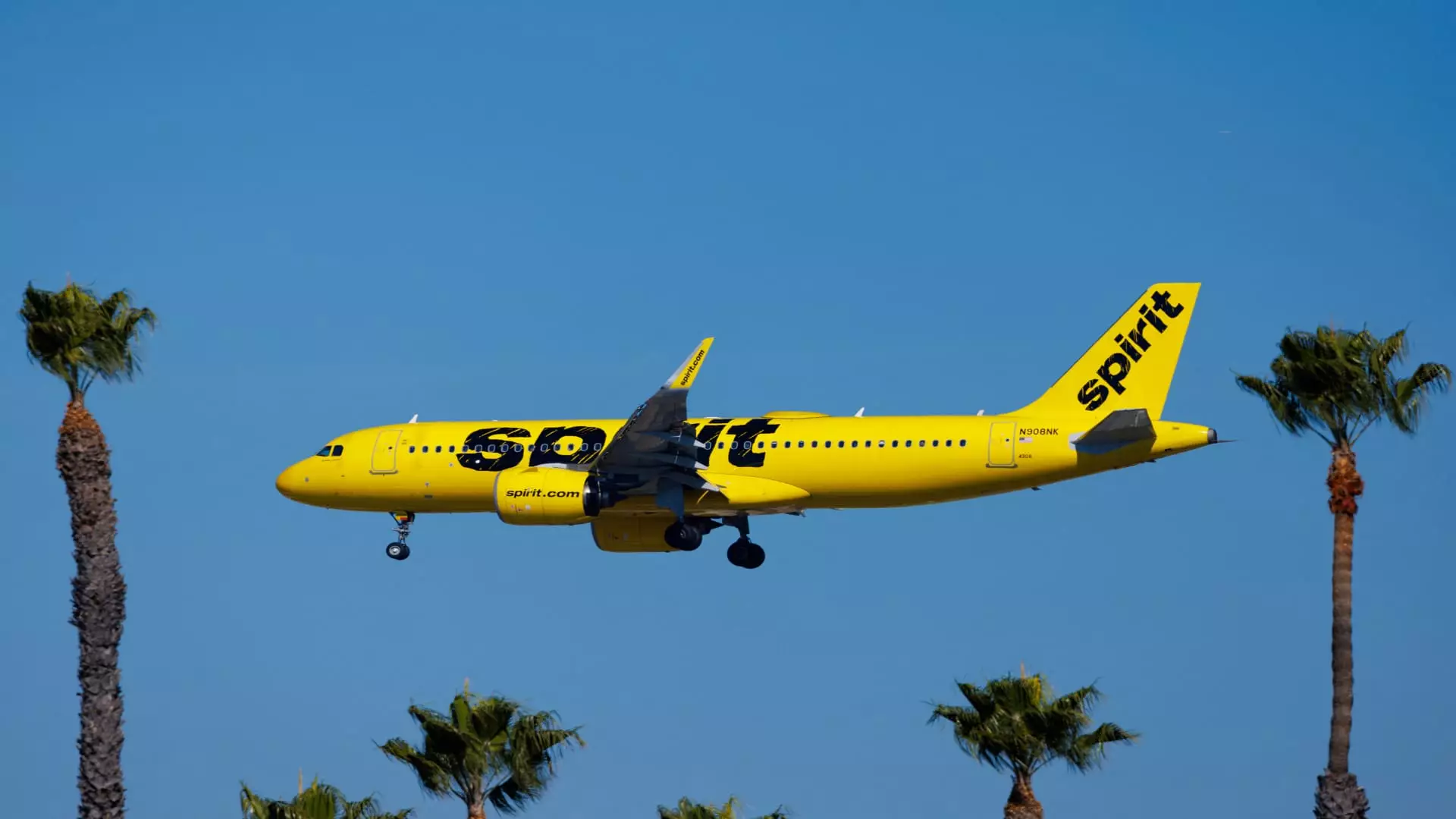On a recent Friday, Spirit Airlines, recognized for its distinctive yellow aircraft that appeals to budget travelers, faced a significant downturn as its shares plummeted to an all-time low. This alarming development comes in light of reports indicating that the airline is contemplating Chapter 11 bankruptcy protection due to mounting financial pressures. The company’s leadership is under intense scrutiny as they grapple with the urgent need to renegotiate over $1 billion in debt by the end of the month. A potential bankruptcy filing would represent a dramatic shift for the airline, which previously thrived on a low-cost carrier model that attracted travelers seeking affordable fares.
Despite its earlier reputation for profitability and punctuality, Spirit’s challenges have escalated since the onset of the pandemic. The airline’s no-frills service model, which once made it a favorite among thrifty travelers, has recently become a subject of mockery on late-night television. With each service charge—from seat selection to carry-on baggage—Spirit attempted to capitalize on the budget traveler segment, yet larger airlines have adeptly replicated this strategy by offering their own low-cost fares, effectively eroding Spirit’s competitive edge.
Adding to Spirit’s woes, a significant regulatory setback occurred early this year when a federal judge blocked Spirit’s proposed acquisition by JetBlue Airways on antitrust grounds. This acquisition was seen by both airlines as a vital strategy to strengthen their position against larger competitors. The regulatory decision not only halted the merger but also left Spirit isolated, making it more challenging to navigate through an increasingly adverse market landscape marked by fluctuating consumer travel preferences and escalating operational costs.
Furthermore, problems within the company’s operations have compounded its difficulties. The ongoing Pratt & Whitney engine recall added to the strain, exacerbating both financial and logistical challenges. In the face of these obstacles, Spirit Airlines has been desperately seeking pathways to restructure its debt and regain stability. Recent statements indicate that Spirit is contemplating options to refinance approximately $1.1 billion in loyalty program-backed debt due next September, a high-stakes maneuver that must be resolved by a looming deadline of October 21.
The airline’s financial condition has deteriorated sharply over the last few years, marked by a staggering loss of nearly $193 million in the second quarter alone. To combat these losses, Spirit has implemented various cost-cutting strategies, including furloughing pilots, reducing flight schedules, and delaying orders for new Airbus jetliners. Industry analysts, such as Barclays’ Brandon Oglenski, noted that Spirit has trimmed its capacity growth plans for November and December by approximately 17%. These moves signal the airline’s urgent need to stabilize its operations and regain financial footing amid an unpredictable market.
CEO Ted Christie expressed optimism despite the company’s plight, stating that Spirit has been executing a comprehensive plan designed to enhance competitiveness and fortify its balance sheet. He reassured staff that constructive discussions with bondholders are ongoing, emphasizing the management’s commitment to achieving the best possible outcome for the business.
Market Reactions and Future Outlook
Market reactions to Spirit’s predicament have been swift and severe. Following the bankruptcy speculation, shares of Spirit tumbled over 24%, reaching a record low of $1.69—a staggering decline of nearly 90% in the current year alone. Conversely, Frontier Airlines, which previously sought to merge with Spirit before the JetBlue acquisition attempt, saw its stock surge by 16% on the same day, illustrating the shifting dynamics in the low-cost airline sector.
While Spirit Airlines continues to work diligently toward restoring its market position, the landscape is increasingly competitive and fraught with uncertainty. The combination of internal operational issues, tough market conditions, and external regulatory challenges raises serious questions about the airline’s ability to navigate its current crisis. As Spirit attempts to plot a course for recovery, stakeholders will closely monitor the airline’s next moves in an effort to gauge whether this budget carrier can regain its footing in a rapidly evolving industry. The road ahead is undeniably bumpy, but the outcome remains to be seen.


Leave a Reply